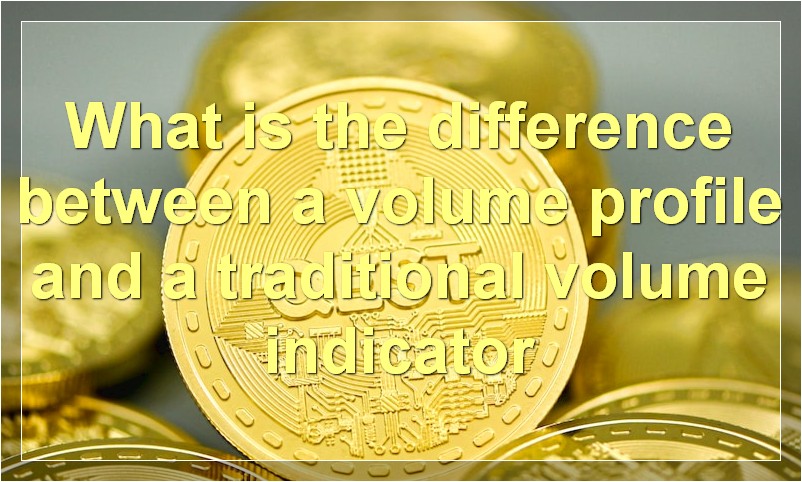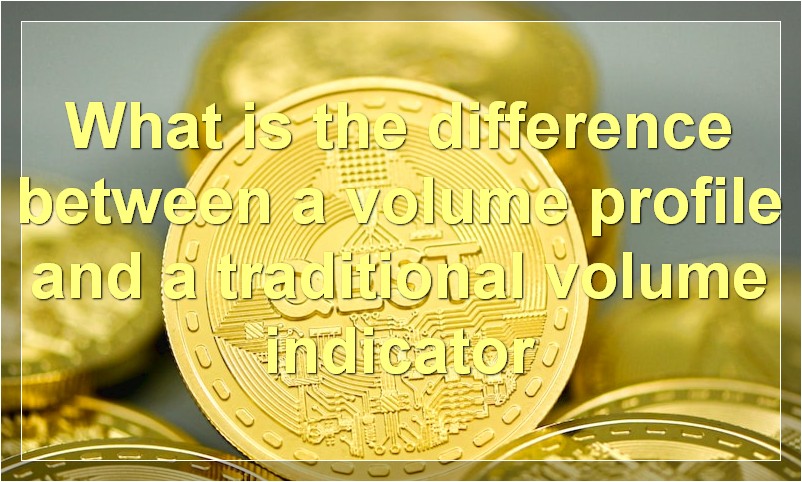If you want to take your trading to the next level, then you need to start using volume profile. In this ultimate guide, we will show you everything you need to know about volume profile, including what it is, how to use it, and how it can help improve your trading.
How is volume profile used in trading
Volume profile is one of the most important tools that traders use to make decisions in the market. It allows us to see the amount of trading activity at different price levels and can help us identify potential support and resistance areas.
When we look at a volume profile chart, we can see where the majority of trading activity is taking place. This can help us make better decisions about where to enter and exit trades. For example, if we see that there is a lot of trading activity taking place at a certain price level, we may want to consider entering a trade at that level.
Volume profile can also help us identify potential areas of support and resistance. If we see that there is a lot of buying activity taking place at a certain price level, we may want to consider that level as a potential area of support. Similarly, if we see that there is a lot of selling activity taking place at a certain price level, we may want to consider that level as a potential area of resistance.
Overall, volume profile is a valuable tool that traders can use to make better decisions in the market. If you are not using volume profile in your trading, you may want to consider doing so.
What is the difference between a volume profile and a traditional volume indicator

There are a few key differences between a volume profile and a traditional volume indicator. For one, volume profiles show how much volume is trading at each price level, while traditional indicators simply show the total amount of volume traded. This can be helpful in seeing where the majority of trading activity is taking place. Additionally, volume profiles can be used to identify potential support and resistance levels, as well as help confirm trends.
How can volume profile be used to identify trading opportunities
Volume profile is a technical analysis tool that displays the volume of trading activity at different prices for a given security. It can be used to identify trading opportunities by identifying areas of high and low volume. High volume indicates strong interest in a security, while low volume indicates lack of interest.
How can volume profile help traders make better decisions
Volume Profile is a tool that shows the volume traded at different prices throughout the day. It can help traders make better decisions by showing them where the most trading activity is taking place and what prices are being traded at.
What are some common mistakes traders make when using volume profile
Some common mistakes traders make when using volume profile are:
1. Not understanding that volume profile is a lagging indicator.
2. Not using volume profile in conjunction with other technical indicators.
3. Not understanding how to interpret the volume profile data.
4. Not adjusting the volume profile settings to fit their trading style.
How can volume profile be used in conjunction with other technical indicators

When it comes to trading, there are a lot of different technical indicators that can be used in order to make decisions. However, one indicator that is often overlooked is volume profile. In this blog post, we will discuss how volume profile can be used in conjunction with other technical indicators in order to get a better idea of the market.
As most traders know, technical indicators are simply mathematical formulas that are used to analyze price data. While some indicators are more complex than others, they all aim to do one thing: give the trader an edge in the market.
Volume profile is a technical indicator that looks at the volume of traded contracts at specific price levels. By looking at the volume profile, traders can get an idea of where the majority of trading activity is taking place. This information can be used in conjunction with other technical indicators to help make better trading decisions.
For example, let’s say that a trader is looking at a candlestick chart and sees that the market is currently in an uptrend. The trader could then use volume profile to see if there is more buying or selling activity taking place at certain price levels. If the volume profile shows that there is more buying activity taking place at higher prices, then this could be an indication that the uptrend is likely to continue.
In addition, volume profile can also be used to confirm other technical indicators. For example, if a trader is using a moving average crossover system and sees a buy signal, they could then check the volume profile to see if there is indeed more buying taking place at those price levels.
Overall, volume profile is a useful tool that every trader should be aware of. By understanding how to use volume profile in conjunction with other technical indicators, traders can get a better idea of what is happening in the market and make more informed trading decisions.
What timeframes are most popular for using volume profile
There are a few different timeframes that are popular for using volume profile. The most common are intra-day, daily, and weekly. Each one has its own benefits and drawbacks.
Intra-day volume profile can be very helpful in spotting short-term trading opportunities. However, it can also be quite volatile and difficult to read.
Daily volume profile is a bit more stable and easier to interpret. It can be helpful in identifying longer-term trends. However, it doesn’t provide as much detail as intra-day volume profile.
Weekly volume profile is the most stable of all the timeframes. It can be used to spot major trends and long-term reversals. However, it doesn’t provide as much detail as daily or intra-day volume profile.
How does volume profile change as market conditions change
In general, as market conditions change, the volume profile of a security will also change. For example, as the overall market becomes more bullish, the volume profile of a particular stock may also become more bullish. This is because investors are generally more willing to buy shares when the market is going up, and so the volume profile of a stock will usually follow suit. However, there can be exceptions to this rule, and so it is important to always keep an eye on the volume profile of a security in order to get a better sense of how it is trading.
Why is volume profile important for traders
Volume profile is a tool that traders use to get a better understanding of the market and where prices are likely to move. By looking at the volume profile, traders can see where there is more buying or selling pressure and make informed decisions about their trades.
What resources are available to help traders learn more about volume profile
There are many different resources that traders can use to learn more about volume profile. Some of these resources include online forums, online courses, and books on the subject. By taking the time to learn about volume profile, traders will be better equipped to make informed decisions when trading.

